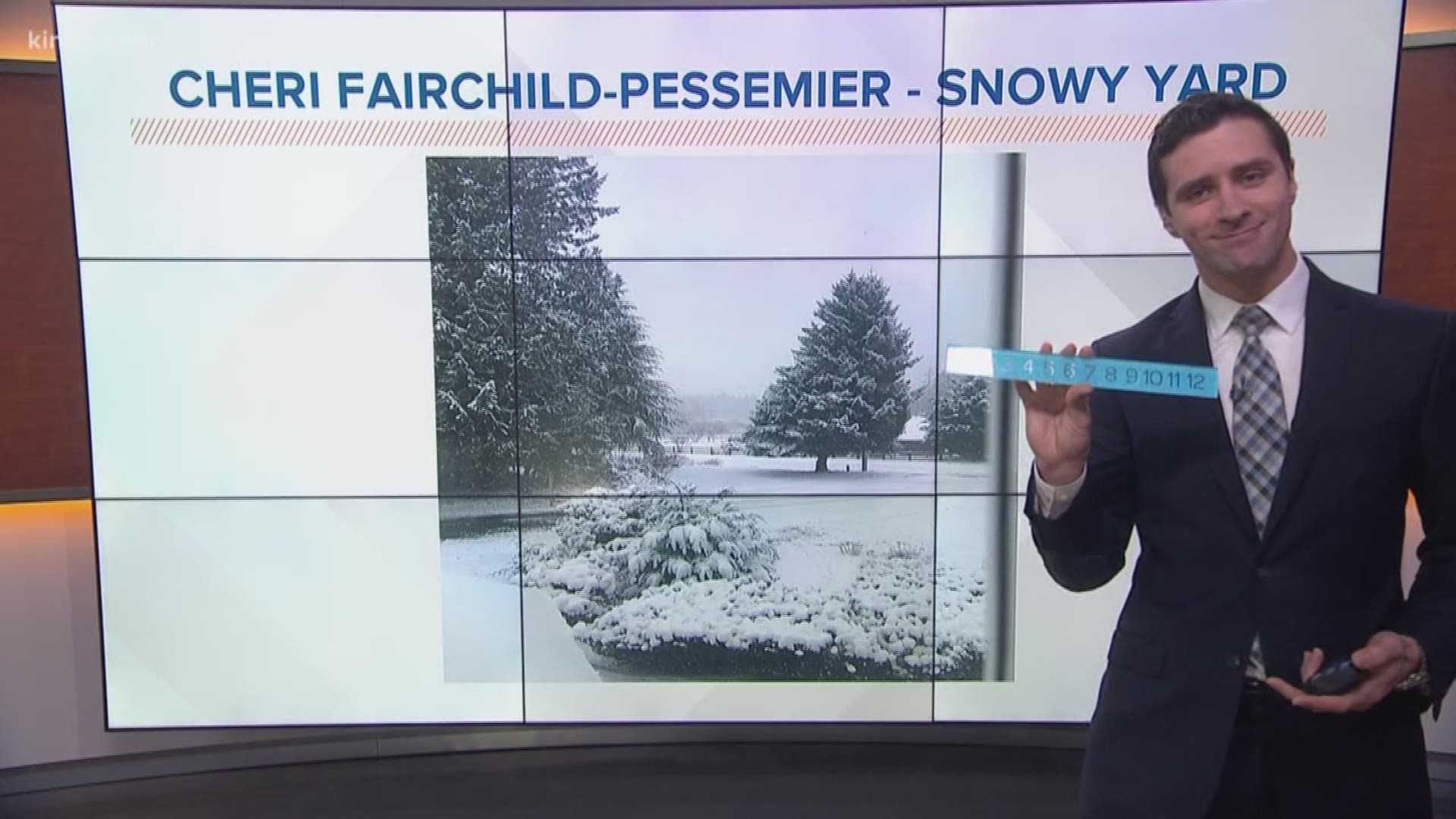During snowstorms, some streets in Seattle are too steep to safely clear. Seattle Department of Transportation's (SDOT) snow response plan is designed to “keep major streets open and passable to the greatest extent possible.”
That means people like Al Riedmann are popular during storms.
“There’s so many people struggling with icy driveways,” Riedmann said. “We fielded 700 calls yesterday.”
Riedmann owns Seattle Snow, a private snow and ice control company. He knows a thing or two about winter weather.
“My wife says I know more than any guy really should,” he laughed.
Riedmann said many clients contract his services before winter begins, so he can’t send a crew to every cold call after a storm. But he does offer some tips.
First – pre-treat pavement with salt or brine before the snow starts. But if it’s too late for that - Riedmann says work smarter, not harder.
“A time like today, when it’s slushy and warm, let mother nature do the work,” he said. “Get out and scrape what you can. Might not get it all, but over a couple days you can work it down. Then once you get it cleared, do a final layer of chloride to keep it from refreezing overnight.”
Riedmann said several stores he visited this week were sold out of de-icer, but in a pinch, any salt would do - even table salt. He also does not recommend putting only kitty litter or sand down on fully-frozen ice.
RELATED: How to officially measure snowfall
“Industry studies show it actually creates a more dangerous environment,” Riedmann said. “So, imagine you have a sheet of ice and let’s throw lots of little balls on top of it.”
If it's semi-melted, Riedmann says it's a different story.
He also said when temperatures stay below freezing for several days salted surfaces can refreeze. So, during a cold spell like this, he recommends mixing three parts grit – like sand or kitty litter – with one-part salt.
“So, you had frozen ice, you melted it, put a traction agent in it, then it refreezes, and you have a surface not dissimilar from our yard here,” he said. “So, you’re walking on sand and kitty litter.”
But Riedmann said it’s critical to “burn” those binding agents into the surface of the ice.
“Clearing snow before it turns to ice is best, and having a bag of street salt on hand is a good winter-preparedness move,” SDOT wrote.
SDOT said if you notice a problem street or area, report it with the “Find It, Fix It” app. Officials also noted that it is property owners’ responsibility to “clear, clean, or repair the public right-of-way adjacent to their property,” but “we can still help to clear hazardous sidewalks which the property owner hasn’t taken care of.”
Riedmann noted he does not clear city-maintained streets because of liability concerns. An SDOT spokesperson was not immediately able to address that point.
Most importantly, Riedmann said with more snow possible at the end of the week, keep doing what you can now to prepare.
“Take these next couple days, chip away and make progress,” he said.
SDOT agreed that a proactive approach to ice would help with any coming snow.


